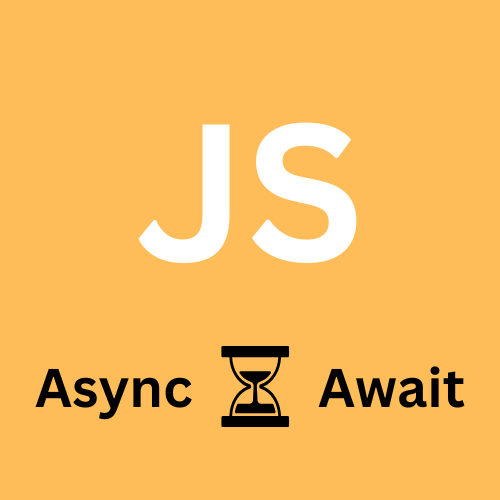Home > frontend > Mastering JavaScript async/await: A Comprehensive Guide
Mastering JavaScript async/await: A Comprehensive Guide
JavaScript async/await is one of the methods for writing asynchronous programming functions. It makes you write clean and readable code without missing to catch errors.
By :Thomas Inyang🕒 22 Feb 2025

Introduction
JavaScript asynchronous programming is a concept that allows you to kick off long-running tasks like fetching data and reading large files (fs) without pausing the rest of your code.
Instead of waiting for a task to complete before moving on, your code can continue running and later process the task’s result once it’s available.
Consider doing laundry: instead of looking at the machine until it finishes (blocking), start the cycle and then move on to other duties (such as washing dishes). Once the machine beeps, you can handle the clean clothing. Async operations allow JavaScript to function in this way: non-blocking and efficient.
In this post, I’ll walk you through the following:
- The fundamentals of JavaScript async/await.
- How async/await compares to other asynchronous methods.
- Techniques and best practices for using async/await effectively.
- How async/await improves the readability of my JavaScript code.
The Fundamentals of Async/Await
When you declare an async function, it signals that the function should run asynchronously and automatically return a Promise. Inside this function, you can freely use the await keyword to pause execution until a given Promise settles—either resolving with a value or rejecting with an error.
See Also: How to Fetch Data Using the JavaScript Fetch Method.
Using await lets you write asynchronous code that looks and behaves almost like synchronous code, eliminating the need for complex promise chains with .then() and .catch(). This not only makes your code cleaner and easier to follow, but it also clarifies the key differences between synchronous and asynchronous execution.
How does the await keyword work?
When you use await, you are telling JavaScript: “Pause here until this promise resolves, then return its result.” For example:
In short, async/await transforms the way you handle asynchronous functions and promise resolution. It provides a more straightforward, readable approach compared to traditional Promises.
To answer the common question: What are the benefits of using async/await over promises in JavaScript? The answer is simple, it significantly improves code readability and maintainability by letting you write asynchronous logic in a natural, sequential style.
How Async/Await Works Under the Hood
When you write an async function with await. Instead of freezing your app (zero multitasking), JavaScript hands control to the event loop—a behind-the-scenes manager that keeps things moving.
Here’s how it works:
- When you await a promise, JavaScript says, “Pause this function, but don’t block the party!”
- The event loop jumps in, handling UI clicks, animations, or other tasks (like a chef flipping between pans).
- Once the awaited promise resolves (e.g., an API responds), the event loop adds your paused function’s code to the microtask queue—a VIP lane for urgent tasks.
- The moment the call stack (your current to-do list) empties, your async function resumes right where it left off.
In summary, await is like hitting “snooze” on an alarm, which means you’re not ignoring it, but delaying until the right moment.
JavaScript has two task lanes:
- Microtasks: High-priority (think: promise resolutions, await continuations). These cut the line and run immediately after the current script.
- Macrotasks: Low-priority (like setTimeout, mouse clicks). These wait patiently in the regular queue.
Real-world analogy:
You’re cooking dinner (microtasks) and getting a delivery notification (macrotask). You finish sautéing veggies (microtask) before answering the door (macrotask)—even if the notification arrived first.
Code example
The following happened in this code:
- setTimeout(() => console.log("Delivery at door!"), 0);
This schedules a macro task (the console.log inside setTimeout) to run after all synchronous code and microtasks finish. Even though the delay is 0, it’s still a macro task, so it goes to the back of the queue.
- demo();
We call the demo function. Since it’s an async function, it runs synchronously until it hits await. First, it logs "Start cooking".
- await Promise.resolve();
await pauses the demo function here. The Promise.resolve() immediately resolves, but the code after await (i.e., console.log("Veggies done!")) is queued as a microtask.
- console.log("Preheat oven");
This runs right after demo() is called (since await yields control back to the event loop). Logs "Preheat oven".
Async/Await vs. Promises and Callbacks
When you write asynchronous JavaScript, you’ll encounter three patterns: callbacks, promises, and async/await. Let’s break down why async/await often becomes your best choice.
Callbacks: The Pitfalls of Nesting
You’ve likely seen (or written) code like this:
In this code, nested callbacks create “callback hell”—a pyramid of indentation that’s breakable and hard to debug. You lose readability, and error handling becomes a manual chore at every level.
Promises: Flattening the Pyramid.
With promises, you chain operations use .then(), which improves structure:
This flattens the code, but you still juggle boilerplate (.then(), .catch()), and debugging promise chains can feel like untangling wires.
Async/Await: Write Async Code Synchronously.
Here’s where async/await shines.

When you write:
By marking your function as async and prefixing promises with await, you pause execution without blocking the main thread. The code reads like synchronous logic but runs asynchronously.
Key Benefits:
- Eliminate Callback Hell: No more nested pyramids.
- Simplify Error Handling: Use try/catch instead of scattered .catch().
- Debugging-Friendly: Step through code with breakpoints like synchronous code.
Why Asyn/await is the Best Choice.
Choosing async/await over callbacks or raw promises means:
- Cleaner Code: Focus on logic, not boilerplate.
- Fewer Bugs: Linear code reduces unintended side effects.
- Better Collaboration: Your code is easier for teams to read and maintain.
See Also: How to Utilize the JavaScript Events.
By adopting async/await, you’re not just following trends—you’re writing JavaScript that’s resilient, scalable, and a joy to debug.
Best Practices for Error Handling with Async/Await
Async/await simplifies error handling in asynchronous JavaScript by mirroring synchronous code patterns. Here’s how to implement it effectively:
1. Use try/catch Inline
Wrap every await in a try block. If something breaks, the catch grabs it instantly.
This eliminates the .catch() chains.
2. Return a Default Value.
This returns a friendly default value instead of showing users a blank screen.
3. Avoid Unhandled Rejections
Async/await ensures errors are never "forgotten" (unlike manual .catch() in promise chains):
In Promise chains, there is a risk of unhandled errors if ".catch()" is omitted
fetchData()
.then((data) => process(data))
.catch((error) => console.error(error)); // Easy to overlook!
But Async/await centralizes error handling
try {
const data = await fetchData();
process(data);
} catch (error) {
console.error(error); // All errors caught here
}
4. Use Tools for Advanced Logging
Integrate third-party services (e.g., Sentry) in catch blocks for debugging
catch (error) {
console.error(error);
Sentry.captureException(error); // Log to external service
}
5. Always await Promises in try Block
Ensure errors are caught by pairing await with try:
try {
const response = await fetch('/api');
} catch (error) {
// Handle network or parsing errors
}
This code will trigger the catch method on rejection.
Conclusion
In conclusion, Async/await simplifies asynchronous JavaScript by letting you write non-blocking code in a synchronous style.
Async is used to declare promise-based functions and await to pause execution until promises resolve—replacing callback chains with linear logic and enabling cleaner error handling via try/catch.
You can share and drop your comments.